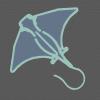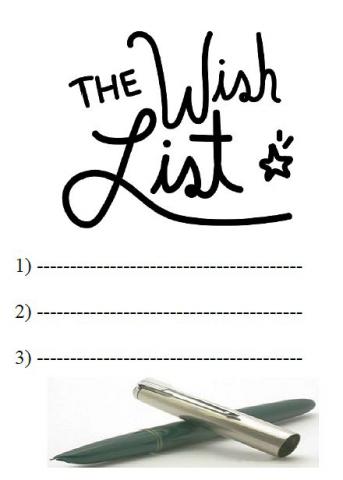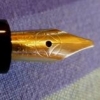Search the Community
Showing results for tags 'chinese'.
-
Exploring Chinese Fountain Pens: State & Acquisition in North America
2ouvenir posted a topic in China, Korea and Others (Far East, Asia)
Dear FPN Community, I am at the near-end of my fountain pen journey and I have great fountain pens that I am already happy with. However, I've been increasingly intrigued by the offerings from Chinese fountain pen manufacturers, and I know they are changing, improving (or devolving!) constantly. I see the odd Chinese fountain pen on Amazon sometimes but I hesitate to buy it despite it being so inexpensive because of inconsistent reviews and supposedly poor quality control. I'm reaching out to our knowledgeable community to gather insights, experiences, and recommendations regarding Chinese fountain pens. Here are a few points I'm curious about: State of Chinese Fountain Pens: What is the current state of Chinese fountain pens in terms of quality, design, and innovation? Are there any standout brands or models worth exploring? Acquisition in North America: While online platforms like eBay and Alibaba are common, I'm interested in exploring conventional channels for purchasing Chinese fountain pens in North America. Have any of you had success in acquiring these pens through brick-and-mortar stores, pen shows, or specialty retailers? Are there any trusted vendors you would recommend? Personal Experiences: If you've used Chinese fountain pens, I'd love to hear about your personal experiences. What do you appreciate about them? Any particular models that have impressed you? Tips and Recommendations: For those who have delved into the world of Chinese fountain pens, do you have any tips or recommendations for someone looking to start their collection? Any pitfalls to avoid? Please feel free to share your thoughts, insights, and recommendations. I'm eager to learn from your expertise and explore the diverse world of Chinese fountain pens! Warm regards, 2ouvenir.- 17 replies
-
- chinese fountain pen
- chinese fountain pens
-
(and 2 more)
Tagged with:
-
Doing some Chinese character studies of the most commonly used characters. I intend to do one a day for at least 1000 characters! It's fun and you should totally join me in this journey! Feel free to do your own character study and post it in the gallery (or here in this thread)! Today I will do the character 的. In Chinese, the character 的 is one of the most commonly used characters and serves several grammatical functions. Its primary usage is as a possessive particle, indicating possession or association. Here's a breakdown of its main functions: 1. Possessive Particle: 的 is commonly used to indicate possession or association between nouns. For example: - 我的书 - "my book" - 他的车 - "his car" - 中国的文化 - "Chinese culture" 2. Adjectival Modifier: 的 can also be used to turn a phrase or clause into an adjective to modify a noun. For example: - 美丽的花 (měilì de huā) - "beautiful flowers" - 好吃的食物 (hǎochī de shíwù) - "delicious food" 3. Nominalizing Suffix: In some cases, 的 is used to turn a verb or a phrase into a noun. For example: - 做饭的 (zuòfàn de) - "the one who cooks" or "cooking" - 看书的 (kànshū de) - "the one who reads" or "reading" 4. Emphasizing Possession: Sometimes, "的" is used for emphasis, especially in written or literary contexts. For example: - 他的书 (tā de shū) - "his book" (standard) - 他书的 (tā shū de) - "his book" (emphasizing possession) 5. Part of Compound Words: "的" is also used as a component in many compound words and phrases, such as "的确" (díquè) meaning "indeed" or "certainly," or "安全的" (ānquán de) meaning "safe." Overall, "的" is an indispensable character in Chinese, playing a crucial role in indicating possession, forming adjectives, nominalizing phrases, and more. Its versatility and frequency of use make it an essential element of the language. Pens/Inks: Kuretake Fountain Pen Brush No. 50 with original pigment cartridge, Pilot Prera F with Pilot Black Paper: A5 Stalogy 365 full year size Notes: I will be using both traditional and simplified characters, view at your own discretion. This is not a lesson in Chinese language, will be mostly focusing on the calligraphy and aesthetics. I will do the calligraphy in traditional character and brief explanation in English scattered with traditional or simplified Chinese. In addition to the regular script, I will experiment with other scripts like the ancient "small seal" script.
- 19 replies
-
- chinese
- calligraphy
- (and 5 more)
-
From the album: j1tters
Doing some Chinese character studies of the most commonly used characters. I intend to do one a day for at least 1000 characters! It's fun and you should totally join me in this journey! Feel free to do your own character study and post it in the gallery! Today I will do the character 的. In Chinese, the character 的 is one of the most commonly used characters and serves several grammatical functions. Its primary usage is as a possessive particle, indicating possession or association. Here's a breakdown of its main functions: 1. Possessive Particle: 的 is commonly used to indicate possession or association between nouns. For example: - 我的书 - "my book" - 他的车 - "his car" - 中国的文化 - "Chinese culture" 2. Adjectival Modifier: 的 can also be used to turn a phrase or clause into an adjective to modify a noun. For example: - 美丽的花 (měilì de huā) - "beautiful flowers" - 好吃的食物 (hǎochī de shíwù) - "delicious food" 3. Nominalizing Suffix: In some cases, 的 is used to turn a verb or a phrase into a noun. For example: - 做饭的 (zuòfàn de) - "the one who cooks" or "cooking" - 看书的 (kànshū de) - "the one who reads" or "reading" 4. Emphasizing Possession: Sometimes, "的" is used for emphasis, especially in written or literary contexts. For example: - 他的书 (tā de shū) - "his book" (standard) - 他书的 (tā shū de) - "his book" (emphasizing possession) 5. Part of Compound Words: "的" is also used as a component in many compound words and phrases, such as "的确" (díquè) meaning "indeed" or "certainly," or "安全的" (ānquán de) meaning "safe." Overall, "的" is an indispensable character in Chinese, playing a crucial role in indicating possession, forming adjectives, nominalizing phrases, and more. Its versatility and frequency of use make it an essential element of the language. Pens/Inks: Kuretake Fountain Pen Brush No. 50 with original pigment cartridge, Pilot Prera F with Pilot Black Paper: A5 Stalogy 365 full year size
- 0 B
- x
-
- chinese calligraphy
- chinese
-
(and 4 more)
Tagged with:
-
Exploring Chinese Calligraphy with Fountain Pens: Share Your Experiences!
2ouvenir posted a topic in Calligraphy Discussions
Greetings fellow fountain pen enthusiasts! I'm starting this thread to connect with others who share this interest and to learn more about your experiences with Chinese calligraphy using fountain pens. Whether you're a seasoned practitioner or just dipping your nib into this art form, I'd love to hear from you! Here are a few prompts to get the conversation going: How did you first become interested in Chinese calligraphy? Do you actively practice Chinese calligraphy with your fountain pens? If so, what pens and inks do you prefer? What challenges have you encountered when adapting Chinese calligraphy techniques to fountain pen writing? Are there any particular resources, books, or online tutorials that have helped you improve your skills? Do you have any favorite Chinese calligraphy styles or scripts that you enjoy writing the most? Feel free to share tips, tricks, favorite tools, or simply your thoughts and experiences. Let's explore the world of Chinese calligraphy together and celebrate the beauty of writing with fountain pens! Personally, I just use a regular Japanese fine for all my Chinese "calligraphy" (some might argue you can only do Chinese calligraphy with an ink brush, I differ) and any fountain pen friendly paper with a light grid layout. The ink should be legible, i.e. not too light. A tip I have is to do reverse writing (if your fountain pen allows) for characters that are extremely complex like 鬢 to get all the details within the confines of your grid, if you decide to have all your characters have the "same size" and equally spaced apart. Before, I go, some inspiration: Looking forward to hearing from you all! Warm regards, 2ouvenir-
- chinese calligraphy
- calligraphy
-
(and 3 more)
Tagged with:
-
This ink caught my eye. The link only took me to the opening page on Pinterest, not the person who posted it. I would so like to know the name & manufacturer of this ink. Is it familiar to anyone? Many thanks in advance!
-
-
So continuing with the pens i bought in aliexpress i got the jinhao 65 which is a metal pen that uses a folded steel nib in the same standard as Lamy, the pen itself its quite like the Lamy CP, its super cheap and you can get a bunch of replacement nibs and the pen with a converter included for 2 usd. I dont actually like metal pens that much, and this pen is quite heavy for its size, and it has a really small diameter. both things that are not great in a pen in my experience. But it works well, the nib works well. as with a lot of jinhao pens the thing is that for the prize you are never worried about the pen breaking. Ergonomics are not the best so i wouldnt really recommend it. I very much prefer the Jinhao 777 in every aspect of the pens i got form aliexpress.
-
So i got a few pens from aliexpress in the jinhao flagship store, the first one i tested was the Jinhao 777 in a "F" nib, which is the candy colored model based on the Lamy Safari, it cost me 1 dollar with free international shipping. So.. in my opinion is one of the best basic pens i have used. It uses a light and sturdy plastic, the color selection is great, the ergonomics are fantastic (credit to Lamy here). it comes with a converter, the size is probably the 3.4mm but i havent checked it for sure. It is not the Lamy size or Standard International. The nib in this pens can be good or it can be bad, it can be broad or fine.. so what you do is you buy a 5 pack of replacement nibs in F or EF ( i bought EF) it costs 0.69 usd and you are good to go. I recommend the EF because the line you get you cannot get in any Lamy nib. In comparison Lamy nibs are as likely to be a size larger that they are suppose to be (and they are already quite large european sizes), or extremely scratchy and a replacement will cost you half of the cost of the already expensive safari. And you have no way of knowing if it will improve the one you have. So in comparison and considering the cost, yes this is better than the safari in the experience of buying a pen and not having regrets later.
-
- 1 reply
-
- chinese
- piston fill
-
(and 3 more)
Tagged with:
-

A Triumph in Teal -- Hong Dian N7 Blue Peacock fountain pen
His Nibs posted a topic in Fountain Pen Reviews
https://youtu.be/Az3vsR2RdM4 -
Greeting all. I just uploaded another informal review (as I'm not currently importing Chinese pens for my website). So informal, in fact, that it wasn't until publishing that I realized that I hadn't mentioned the filling system! These are cartridge/converter pens, unlike the piston fill Hong Dian Gray Rabbit pen I profiled last time. There are three versions: Steel Flighter; Brass; Cargon Fiber over brass. Regards, Norman
-
...um, probably not. Gray Rabbit
-
Handmade full titanium Pelikan replica by Mr Zhuang
wtlh posted a topic in China, Korea and Others (Far East, Asia)
I posted it also in the Pelikan forum, but I thought the topic is also perhaps relevant here. I have recently received a Pelikan M400 replica from Mr Zhuang, who is a well-known pen customiser in China. The pen cost around 500 GPB body only, so if you are going to purchase a genuine Pelikan nib unit you will be looking at around 100 to 200 extra. Including shipping and tax, this puts the pen in the price range of a Toledo M700. However I have to say it is worth the money. The workmanship is fantastic, the decorative cap and blind cap rings are all separate pieces screwed onto the main body and they are also titanium oxidised to a golden colour. The barrel and section, caps and the entire piston mechanism are machined out of a solid titanium alloy stock, then hand polished. The piston uses two o-rings to function as the piston seal, there is an extra o-ring sealing the section and the barrel. The only other non-titanium parts on the pen are the Pelikan nib unit, and a plastic inner cap ensuring a tight seal when the pen is capped. Everything can be disassembled, and Mr Zhuang had kindly supplied me a wrench for the piston, which is fixed by left-handed screws like M800, but smaller. This tool is really useful for disassembling my M101Ns too, given the TWSBI wrenches are too wide for those. The pen is a faithful copy of the original in terms of dimensions, perhaps only a couple of mm longer. The clip is hand forged using titanium, then oxidised to gold colour. Because it is hand forged in his small workshop it was not possible to reproduce the Pelikan beak. However the overall shape was done nicely and does not look out of place. Given corrosion resistance of titanium alloy, this pen do not have a plastic inner barrel. Ink comes into direct contact with the metal barrel itself. Titanium alloy TC4 is virtually immune to any acid or alkaline attack, at least in the range of all fountain pen inks we can think of, including Parker 51 and Superchrome. The pen weighs 46g, which is quite heavy, but understandable given it is essentially milled out of a solid titanium bar with thick barrel walls. Writing with it I felt it to be more comfortable than a Lamy 2000 SS. I am usually a light pen person, and prefer full resin pens, but this pen for some strange reason do not feel heavy in hand. I attribute it to the shape of the Pelikan section and the overall balance. I wrote unposted. The pen can be posted but it will become back heavy. The only negative would be that it has no ink window. But it is not a big deal because 1) the pen has a ink capacity identical to M400, which is respectable. 2).the way Pelikan feed is designed, which has a big buffer exposed outside meaning that I can turn the piston slowly until I can see ink rising in the buffer, and then turn the piston back down. This allows me to accurately determine how much is left in the pen. Overall, highly recommend if you want to buy yourself something special. Mr Zhuang makes titanium replicas of other brands too, Montblancs, Parker 51, etc. He also makes titanium piston replacements for Pelikan and Montblancs. Other than titanium he also works on other metal like stainless steel and silver, I am considering a full sterling silver Parker 51 flighter as my next purchase... PS: In the writing example: Nib: Richard Binder XXF full flex M250 14k Ink: Pilot/Namiki Blue. -
desaturated.thumb.gif.5cb70ef1e977aa313d11eea3616aba7d.gif)
The Lord's Prayer, as writing sample text
A Smug Dill posted a gallery image in Premium Account Albums
From the album: ~Nothing to see here, move along
How well would OCR (optical character recognition) work on this, on account of my mediocre handwriting, as well as writing in different styles? In reply to the discussion here: https://www.fountainpennetwork.com/forum/topic/363267-scanning-app-organization/
- 0 B
- x
-
Do you recommend cheap Amazon\Ali-express welders (~$100) for stacking fp nibs and retipping? I know the quality is not similar to that of argon gas high end welders, but will it get the job done with acceptable results, knowing it’s just to play with nibs and have some fun ?
-
Baoer, Jinhao and Hero pens can be found with ease, but brands like Wing Sung, Moonman etc are almost impossible to find. I really want to get a Wing Sung 699 and a Moonman M100, but the price of shipping is more than one and a half times the pen itself. Please suggest me sources from which I could buy Chinese pens for a reasonable price.
-
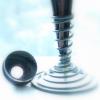
Worth Sharing , Resource For Those Learning To Write Chinese
Mech-for-i posted a topic in Calligraphy Discussions
This show up shared by the originator of the whole effort online , I will skip the interim part ( not that all of us can read Chinese anyway ) but here's the link - Free and Copyright granted Textbook / Manual on writing semi-cursive Chinese Calligraphy ( in ENGLISH ) -- 5 replies
-
- chinese
- semi-cursive
-
(and 1 more)
Tagged with:
-
I haven't posted much on here but because of the lack of information about the N1 pen from Moonman, I've decided to drop some thoughts on here. This pen was purchased on Aliexpress for $20 (free returns option) and comes with a converter as per the listing description. The pen is all metal and while it's not heavy, it's got some heft for a small pen. It feels slightly lighter than my Faber Castel Loom. While capped, the pen is slightly back-weighted but it's minor and doesn't bother me at all (a friend of mine does not like this however). The pen is comfortable to hold in the hand and while it's possible to write without the cap, I'll be using it posted. At the end of the body is a clear rubber ring that keeps the cap secure when posted and it works very well. That said, there's a hairline wiggle pivoting from the rubber ring to the body. It's very small but is noticeable while writing. Onto the nib. This pen is a very smooth writer out of the box and did not have any issues or in need of adjusting. It's a firm nib, very little flex but is the smoothest fine nib I've used to date (sample size is small, 3 pens). If I could compare it, it would be like taking my Lamy Aion medium nib and making it a fine nib. This pen came with a converter. It's small and as you might see in the pictures, just barely fits into the barrel. I was pleasantly surprised that after inking up the pen through the converter (not the nib) it wrote after a few seconds, no priming was necessary. The ink used is Noodlers Kiowa Pecan which is slightly on the dry side (compared to my sample vial which seems wetter.....). I plan to use Sailor green ink next time which is wetter. I'd give this pen 4/5 with the only flaws being the balance and (very) slight cap wiggle. The pen capped compared to my hand:
-
Introduction This is a review of the "Master" from Kaco. I saw precious few reviews of this pen while I was researching for it, for possible purchase, either on youtube or written. I took a chance based on a few comments regarding the quality of the nib, and I am very glad that I did. This is one of those occassions where a gamble pays off. This is one of the best, if not the best, Chinese pens that I own - compared to 5 pens form PenBBS, 5 from Moonman and a couple of Wing Sungs and Jinhaos. This is also the most expensive Chinese made pen that I own, beating the 14K WingSung 698 and the Bock nibbed Moonman 800 (another excellent pen); however at $80, its not expensive for what you get. This pen cost around $80 on one of the discount weeks on Aliexpress. However, the price tends to fluctuate quite a bit from mid 80s to even up to $140...so try to catch a good deal if you can. For anything less than $100 - this pen is an absolute steal. Both for the elegance and ergonomics of the design as well as for the surprisingly springy and precise gold fine nib (which though an interesting quirk to keep in mind as I discuss below). Appearance & Design - This pen as a cigar shaped design (with the cap slightly more rounded than the barrel) which is a classic. The material is a glossy black resin polished to a high shine. there is only one visible accent which is a substantial metal clip. The clip is one of the defining features of this as it is spring loaded; and attached to the top of the cap. The clip also fit into a clip-shaped recess in the cap, so that the clip is almost (but not exacly) flush with the surface of the cap. the clip also has the only visible logo on the pen (besides the nib which I shall come to). Due to the spring mechanism, the clip is extremely ease to operate and very functional; if you care to post a pen this big. Other than that; the pen is understated and elegant. It seems perfect for use at workplace (will I use my most colorway acrylic pens in the workplace with impunity, but some workplaces are more stuffy I am told ;-)) . This seems to be a theme with Kaco - they seem to prefer to make 'business gift' oriented pens in solid colors and have seemingly eschewed colorful resins till now. the pen comes with an oval dedicated pen case, which can be stood upright, whereby it also operates as a pen holder. It has a foam insert with a hole cut out to rest the barrel so that the resin pen does not court scratches from the metal sides of the holder. Apologies as this was left in my office, and I could not fetch that (and a lot more things) given that lockdown was imposed in our country on a weekend night with 4 hours notice! So this link should give a fair idea Opening the cap, one sees an ample hourglass shaped section, followed by a number 6 14k nib in Fine with a minimalist design - just two lines parallel to the shoulders and the logo and below that, the words 14k. there is a broad thermoplastic feed which is similar to (but not same as) as Jowo #6 feed. the section is long and the threads for the cap are precise. The nib seems perfectly proportioned to the size of the pen. Overall, the pen looks stellar and understated. It reminds one of high end Urushi pens from across the East China Sea. It made me renege on my decision to not buy another black black for a while; so that's something. I just wish they offered this model in other solid colors (on this note, there is a steel nibbed, slightly smaller, version of this pen which cost about $30 and is also available in appealing red and white versions. Wonder why they didn't provide options for the 14k model...I'd have loved me a red version...). I also like that it does not look like an obvious rip off any other design - various influences are there (for example the clip is similar (though not identical) to that in the Lamy Imporium, and the body is similar to several Japanese ebonite and urushi pens, it is distinct enough to be an unique design. Construction & Quality– Construction is top notch. Forgot $100; it would not disappoint in a pen worth $300. There is no squeak in turning the threads (either of the barrel or the cap). The polish in the resin body and gold plated clip is top notch with a mirror like finish when new. On the flip side, this causes any gathered lint or dust to stand out, and may highlight even the smallest scratches (which it does; if you are one inspects obsessively). One that note, while the gold plating is of good quality, it does feel a bit soft and scratch prone; I have been accordingly, careful of how I place of the cap on the table etc. The nib and feed attach into a housing which doesn't appear to be removable. At least I was not able to. The nib and feed though can be pulled out with some effort. Weight, Dimensions and ergonomics This is a big pen, bordering on oversize. Smilar to MB149 and Sailor KOP Profit; However, most of the girth is in the cap; the barrel is actually, reasonably slim. Length; weight (capped): 154mm (6.06"); 28gms gms (1 oz) Length; weight (uncapped) : 135mm (5.3”) (measured from tip of nib); 14gms (0.5 oz) Length; (posted) : 161mm (6.34") Section length : 25mm (1”) Section diameter: 11mm to 13mm (0.43 – 0.5 inch) [this is a rough calculation). In short, it is large but not egregiously so. Further, the cap weighs exactly half the total pen weight (due to the substantial clip and the significantly larger diameter); hence it is very light and comfortable when used uncapped. I stress: this pen is perfect as far as ergonomics go. the section is perfectly contoured and the length and weight (uncapped) is just right. Some comparison pictures are below: This is what it looks like next to the PenBBS 380 and the Pilot Justus - both similarly large black pens pens at around 145-150 mm (5.8-6"") posted. This is a comparison with some other pens (left to right: TWSBI 580AL, Sailor Pro gear slim, Kaco Master, Montegrappa Fortuna teak, PenBBS 456) It posts deeply but not securely. You wouldn't need to post this pen; but you can subject to cap possibly falling if you suddenly turn it around. Nib & Performance - Cue: customary bokeh shot of nib It has a very well-tuned #6 nib which extremely springy and relatively soft, for a modern nib. the odd thing is that it has a significant forward curve; this creates an ...interesting sensation, as the apparent angle of the pen to paper is different from your normal holding angle. the forward curve can cause the pen to catch to paper in sudden down-to-up movements; such as rounding a 'g' or bottom-extension of an 'f'; this is more so on rougher papers. This seems to be a conscious design choice, as the pictures in the web listing suggest that this helps appreciate/ fully utilize the springiness of the nib. Even with this, I really do enjoy the nib - it is springy and soft, and really smooth with the required traction to have sufficient control over the written word. While springy, this is not a flex nib, and I wouldn't feel comfortable trying to coax out line variation. Pic of pronounced forward curve of the nib: The feed is a jowo type wide shoulder one; but is perfectly tailored to the curve of the nib. It was a little dry at first, but after a little adjustment, is providing uninterrupted generous supply of ink. Filling System & Maintenance – This is a simple C/C system. The converter is interchangeable with a schmidt K5 converter. The supplied one looks slightly larger but I could be mistaken. Disappointingly, it does not have metal reinforcements at the mouth. the plastic also is slightly cloudy and not crystal clear. However, it is perfectly functional. It is good that it uses the K5 standard, as one can use cartridges in a pinch. (apologies for the bubbles - it was a hurried fill) The nib is a true fine. When I think of fine, I think of this line width. Since this pen supplies, it makes me satisfied. Here is a comparison to well known nibs with similar line widths, namely European fines and Japanese Medium, with the same ink in all (Pilot Iro Yama Guri): As you can see, this nib writes very similar to a Jowo or Bock fine; and also similar to a pilot 14K and Sailor 14K Medium. The Kanwrite F is slightly finer, and the penBBS F is way fatter (its actually closer to a western medium). the Moonman is between the Kaco and the PenBBS. Some longer writing samples; one on Rhodia and the other on ITC classmate (a low cost, but really good, student notebook) Cost & Value – I paid about $80. This is on the lower end for this pen and usually available during sales. At this price, it is a phenomenal deal. I would say, given the quality, ergonomics and writing experience, anything below $125 is a good deal. Conclusion – This is a pen which ticks most boxes. I find it among the most comfortable pens to hold, and the writing experience, even with the quirky angle on the nib, is pleasurable. The build quality and finish is superb. Only concern for me is finding replacement feeds/ nibs in case of damage and the lack of color and nib width alternatives, which would prevent it from being a pen appreciated by a broader spectrum of FP users.
-
Please see the other post on the same topic. This got posted midway to writing by mistake.
-
'new And Improved' Penbbs 355
TheVintagelife posted a topic in China, Korea and Others (Far East, Asia)
Hi, I just noticed on Beini's etsy site that there is a 'new and improved; version of the 355 bulk-filler in some colorways. Anybody have an idea about what is different and what issue it addresses? I held back from the original bulkfiller due to mixed reviews on ease of use and opted instead for several of 456s and 500s and now a 492 as well (all brilliant). Might pick up one this time. https://www.etsy.com/shop/PENBBSOfficialStore?ref=simple-shop-header-name&listing_id=802394863§ion_id=25398175 Also to those who have a 355 - is it very difficult ascertain whether one got a good fill if one has a opaque resin body? - for example, I thought an opaque body will be less than ideal in a 500 due to the new system; but I took the chance on an autumn and it has not been a problem. -
Penbbs #286 幽山向晩 (Remote Mountain By Nightfall -- not an official translation) comes in a "60±5ml" bottle with a octagonal horizontal cross-section. It's damn difficult to come by a bottle. It's isn't so easy just to come by an image of a bottle of it! Source: eBay (I'm trying to rediscover my enthusiasm for reviewing inks by doing one, and move to an easier procedure by using just one or two pens instead of five or more. Alas, no joy, but what's done is done, so here it is.) Drying time: Astoundingly fast. I don't think I've tested any other ink that almost completely dried on Rhodia Dotpad 80g/m² paper in five seconds. Lubrication: I can't comment on that, since I don't have a large number of data points as to how much friction my tester frankenpen usually generates when writing on a Rhodia Dotpad. Saturation: I haven't figured out how to test that. The ink does appear to have a moderate-to-heavy dye load. Feathering: None observed when writing on the Rhodia Dotpad or in a Leuchtturm1917 hardcover A5 journal. Ghosting: None observed from writing on 80g/m² paper of various types. Japanese paper of a lighter weight could be a different matter. Bleed-through: None observed from writing on Rhodia 80g/m² paper. Even where I did four passes with a Pilot Parallel 6.0mm pen, as long as there was no pooling of ink, there was no bleed-through. No bleed-through in this Muji A5 Notebook SKU#4550182108910 either, even when I'd written with a dip pen that was so wet the letters haloed with sheen. I did see some tiny spots on the reverse of a page in a Leuchtturm1917 hardcover A5 journal, at some (but not all) intersections of pen strokes using a wetter pen. Shading: There is shading when using either a broad enough or just moderately wet pen. Look at the mark left by one pass of the Pilot Parallel 6.0mm pen. Of course, it's up to your pen and your penmanship to distribute the ink unevenly to get visible shading. Sheen: This ink sheens a dull purplish black, usually around the edges of wet pen strokes causing a 'halo' effect. Water resistance: Some. Leaving the ink to dry for 60 minutes instead of just 10 minutes before soaking did not appear to increase the ink marks' water resistance on Rhodia 80g/m² paper, but soaking the paper for 20 minutes instead of 10 minutes made a difference. Accidental spillage or random raindrops on writing will not eradicate it from the page, provided it is treated promptly. Otherwise, the colour that escapes from the page into the droplet could settle back onto the paper and obscure the writing.
-
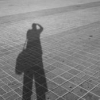
Looking For Luxury Upper End Chinese Fp ?
mns68 posted a topic in China, Korea and Others (Far East, Asia)
Do you know any Chinese brand which make upper end luxury fountain pens ? -
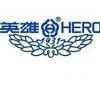
Chinese & Asian Fountain Pen Wishlist
Stefan-Ionut-Marius posted a topic in China, Korea and Others (Far East, Asia)
Chinese & Asian Fountain Pen wishlist !!! Here you can put your wishlist , on that list can be added any Asian fountain pen . On this list it would be great if you guys could add some links from were you intend to buy or some pictures at least .- 2 replies
-
- fountain pen wishlist
- chinese
- (and 6 more)
-
Hello again to all my FPN friends, Today the long awaited Penbbs 456 vac-filler arrived in the mail, so I thought I'd give everyone still waiting for theirs on the slow boat from China to see what they have to look forward to. Below are just a few impressions after filling it up and taking it for a test drive. - The pen just exudes quality! The translucent blue material looks thick and sturdy. The pen just feels very solid and sturdily constructed. - The 456 is just a tad longer than the 309, but notably heavier due to the additional metal parts (see comparison photos below). - It posts securely, the most securely of any Penbbs pen I own. - The clip is one of the best I've seen on a Chinese pen. It's just the right amount of springiness and slides very smoothly only whatever it is clipped too. Unlike previous Penbbs models, the end of the clip isn't just folded over metal, but appears to be a separate piece welded on. - The vacuum mechanism worked perfectly on the first try and filled up a little more than half the ink chamber with one pump. I'm so happy to have been able to try this filling system without having to pay $70+ for a TWSBI. I've owned TWSBIs before and I'd say the 456 actually feels more solid. - Although the section threads are metal going against the cap's threaded acrylic, uncapping and capping the pen is very smooth and secure. The metal threads on the section are smooth and I have no problem actually resting my fingers on the threads when writing (something I have to do given the issue below). - The only negative point for me is the balance. The pen is back heavy even when not posted. This probably won't be an issue for people with larger hands. However, with my small hands I must hold the pen on the section threads in order to obtain a comfortable balance for writing. Otherwise the angle of the pen decreases from how I normally write. - As for the nib, it's a super smooth two-tone #6 Penbbs nib. It writes a little on the dry side, but the filling method ensures that there's plenty of ink in the feed to keep it going. The nib has the classic Penbbs slight bend to it which can actually make a little bit of line variation, what I would call "semi-architect." Downstrokes are about 0.5mm while sidestrokes can vary from 0.3 to 0.8 depending on the writing angle. Ink fly increases with pressure, but there's nothing in the way of flex. All in all, I think Penbbs has created their best product yet and can't wait to see what they come up with next! Comparisons (from left to right: Pelikan M215, Lingmo Lorelei, Platinum 3776 Century, Penbbs 308, Penbbs 309, Penbbs 456) Writing (slight line variation between vertical and horizontal strokes)


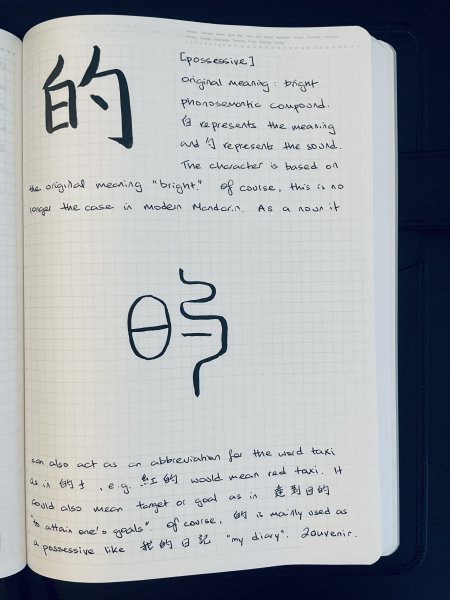














.jpg.da646567bc3127c52d58f1e0c3e0ca2e.jpg)

